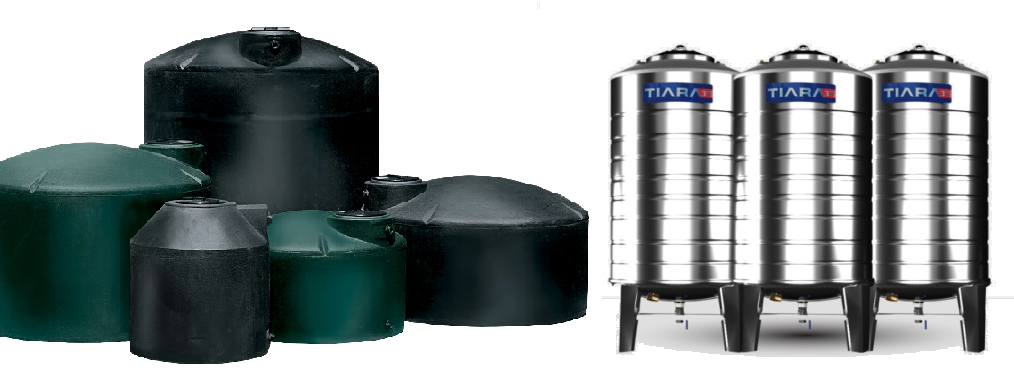
When it comes to storing water for daily usage, choosing the right material for a water tank is crucial for maintaining hygiene. Plastic and stainless steel are two popular options, each with its own set of advantages and drawbacks. The decision often boils down to factors such as durability, health implications, environmental impact, and cost-effectiveness.
Plastic Water Tanks
Plastic water tanks are widely used due to their affordability, lightweight nature, and ease of installation. They are typically made from high-density polyethylene (HDPE), which is non-toxic and resistant to corrosion. However, concerns arise regarding the hygiene of plastic tanks when exposed to prolonged sunlight and high temperatures.
Pros:
Cost-effective: Plastic tanks are generally cheaper than stainless steel tanks, making them accessible to a wider population.
Lightweight: Easy to transport and install, even in hard-to-reach areas.
Corrosion-resistant: Unlike metal tanks, plastic tanks are not prone to rusting.
Cons:
Temperature sensitivity: Extended exposure to heat can lead to the release of chemicals like bisphenol A (BPA), potentially contaminating the water.
Durability: Plastic tanks may degrade over time due to UV radiation, leading to cracks and leaks.
Environmental impact: Plastic production and disposal contribute significantly to pollution and environmental degradation.
Stainless Steel Water Tanks
Stainless steel tanks, on the other hand, are known for their durability, robustness, and superior hygienic properties. They are constructed from food-grade stainless steel, which is resistant to corrosion and does not react with water, ensuring that stored water remains safe and clean.
Pros:Hygiene: Stainless steel does not release harmful chemicals, even under extreme conditions, making it ideal for safe water storage.
Durability: These tanks have a longer lifespan and withstand harsh environmental conditions better than plastic tanks.
Eco-friendly: Stainless steel is recyclable, reducing its environmental impact.
Cons:
Cost: Stainless steel tanks are more expensive upfront, which might not suit every budget.
Weight: Heavier and more challenging to transport and install compared to plastic tanks.
Maintenance: They require regular cleaning to avoid sediment buildup and ensure optimal performance.
Hygienic Considerations
When it comes to hygiene, stainless steel tanks have the upper hand. They do not leach chemicals into the water and resist microbial growth, ensuring water quality remains high over time. Plastic tanks, while safe when new, can become less hygienic due to chemical leaching and degradation, especially in hot climates. Regular maintenance, including cleaning and inspection, is essential for both types of tanks to prevent contamination.
Final Verdict
The choice between plastic and stainless steel water tanks depends on individual needs and priorities. For those seeking a cost-effective solution and lightweight design, plastic tanks are a viable option, provided they are used responsibly and maintained well. However, for long-term durability and superior hygiene, stainless steel tanks are the clear winner, despite their higher initial cost.
Ultimately, investing in a quality water tank that aligns with health and safety standards is vital for ensuring the cleanliness and safety of your water supply. As awareness of environmental sustainability grows, opting for recyclable and eco-friendly materials, such as stainless steel, may become the preferred choice for conscientious consumers.


